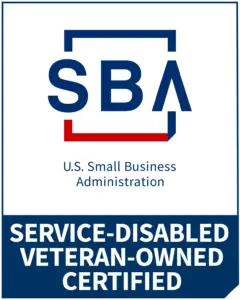How to Design a Powerful Business Web Page, Top Tips
In today’s digital age, having a well-designed business web page is crucial for attracting and retaining customers. A website serves as the virtual face of your company, providing essential information and reflecting your brand’s identity. At Kmarks Web & Computer Solutions, we understand the importance of creating a web page that not only looks good but also performs efficiently. In this blog post, we’ll guide you through the process of How to design a business web page that stands out and meets your business objectives.
Thank you for reading this post, don't forget to subscribe!Points To Keep In Mind
- Identify and understand your target audience.
- Plan your website with a clear purpose and goals.
- Choose the right platform based on your needs.
- Incorporate essential elements like an effective homepage, clear navigation, and a contact page.
- Focus on user experience with mobile responsiveness and fast loading times.
- Apply visual design principles with a consistent color scheme and typography.
- Develop a strong content strategy with compelling headlines and SEO best practices.
- Integrate functional features like contact forms and e-commerce functionality.
- Ensure security and privacy with SSL certificates and data protection policies.
- Test thoroughly before launching and continue to monitor and update post-launch.
Have Questions About Any of Our Services?
Contact Us:- Wetumpka, Alabama
Phone: (334) 472-0686, Support: (334) 472-0686 Ext 5
Email: [email protected]
Understanding Your Audience
The first step in designing an effective business web page is understanding your target audience. Knowing who your audience is and what they need will help you tailor your website’s design and content to meet their expectations.
- Identifying Target Audience: Conduct market research to understand the demographics, preferences, and behaviors of your potential customers.
- Analyzing Audience Needs: Determine what your audience is looking for when they visit your site. Are they seeking information, looking to make a purchase, or needing customer support?
- Creating User Personas: Develop detailed profiles of your ideal customers to guide your design and content decisions.
Planning Your Website
Effective planning sets the foundation for a successful website. It involves defining your website’s purpose, setting goals, and organizing content logically.
- Defining the Purpose: Clearly articulate the primary purpose of your website. Is it to inform, sell, or engage?
- Setting Goals: Establish measurable objectives, such as increasing traffic, generating leads, or improving user engagement.
- Developing a Sitemap: Create a visual representation of your website’s structure, outlining the main pages and subpages.
- Wireframing: Sketch basic layouts to visualize the placement of key elements like navigation, content, and CTAs (Call to Actions).
Choosing the Right Platform
Selecting the right platform is crucial for the functionality and scalability of your website.
- Comparing Website Builders: Evaluate popular platforms like WordPress, Wix, and Squarespace. Consider factors such as ease of use, customization options, and cost.
- Custom-Built Websites: If you have specific needs, a custom-built website design may be the best option. It offers more flexibility and scalability but requires a higher investment.
- Factors to Consider: Think about your budget, technical expertise, and future growth when choosing a platform.
Essential Elements of a Business Web Page
Every business web page should include essential elements that provide information and guide users through their journey.
- Effective Homepage Design: Your homepage should capture attention and clearly convey your value proposition.
- Clear Navigation: Ensure that your navigation menu is intuitive and easy to use.
- About Us Page: Share your company’s story, mission, and values to build trust with visitors.
- Services/Products Page: Highlight your offerings with detailed descriptions and high-quality images.
- Contact Page: Provide multiple ways for visitors to get in touch, such as a contact form, email, and phone number.
- Testimonials and Reviews: Display customer testimonials to build credibility.
- Blog Section: Maintain a blog to share valuable content and improve SEO.
Designing for User Experience (UX)
A positive user experience is key to retaining visitors and encouraging them to take action.
- Mobile Responsiveness: Ensure your website is optimized for mobile devices.
- Intuitive Navigation: Simplify the user journey with clear and logical navigation paths.
- Fast Loading Times: Optimize images and use efficient coding practices to reduce load times.
- Accessibility: Make your website accessible to all users, including those with disabilities.
Visual Design Principles
Visual design plays a significant role in creating an appealing and professional website.
- Choosing a Color Scheme: Select colors that reflect your brand and create a cohesive look.
- Typography Best Practices: Use legible fonts and maintain consistency across your site.
- High-Quality Images: Incorporate professional images and graphics to enhance your content.
- Consistent Branding: Ensure that your branding elements, such as logos and colors, are consistent throughout the site.
Content Strategy
Content is king, and having a strong content strategy is essential for engaging visitors and improving SEO.
- Compelling Headlines: Craft headlines that grab attention and entice visitors to read more.
- SEO Best Practices: Integrate relevant keywords naturally and optimize meta tags and descriptions.
- Content Management Systems (CMS): Use a CMS like WordPress to manage and organize your content efficiently.
Integrating Functional Features
Adding functional features can enhance the usability and interactivity of your website.
- Contact Forms and CTAs: Encourage visitors to take action with well-placed forms and calls to action.
- E-commerce Functionality: If you’re selling products online, integrate a secure and user-friendly shopping cart system.
- Social Media Integration: Link to your social media profiles to increase engagement.
- Newsletter Sign-Ups: Collect email addresses for your mailing list to stay connected with customers.
Ensuring Security and Privacy
Protecting your visitors’ data is crucial for building trust and maintaining compliance with regulations.
- SSL Certificates: Secure your website with an SSL certificate to encrypt data and boost SEO.
- Data Protection Policies: Clearly state how you collect, use, and protect user data.
- GDPR Compliance: Ensure your website complies with GDPR if you operate in or serve customers in the EU.
Testing and Launching
Before going live, thoroughly test your website to ensure everything works correctly.
- User Testing: Gather feedback from real users to identify and fix issues.
- Usability Testing Tools: Use tools like Hotjar or Crazy Egg to analyze user behavior.
- Fixing Bugs: Address any technical issues before launch.
- Launch Checklist: Follow a checklist to ensure a smooth launch.
Post-Launch Strategies
Once your website is live, continue to monitor and optimize its performance.
- Monitoring Performance: Use tools like Google Analytics to track key metrics.
- Regular Updates: Keep your website fresh with regular content updates and maintenance.
- Analyzing Feedback: Collect and analyze user feedback to make improvements.
- SEO and Content Marketing: Implement ongoing SEO and content marketing strategies to drive traffic and engagement.
Comparison of Popular Website Builders
| Feature | WordPress | Wix | Squarespace |
|---|---|---|---|
| Ease of Use | Moderate | Easy | Easy |
| Customization | High | Moderate | Moderate |
| Cost | Varies | Affordable | Moderate |
| Scalability | High | Moderate | Moderate |
| E-commerce | Yes (via plugins) | Yes | Yes |
FAQs
1. What is the most important aspect of web design?
A. The most important aspect of web design is ensuring a positive user experience (UX), which includes intuitive navigation, fast loading times, and mobile responsiveness.
2. How much does it cost to design a business website?
A. The cost of designing a business website can vary widely depending on the complexity, features, and whether you use a website builder or hire a professional. It can range from a few hundred to several thousand dollars.
3. How often should I update my website?
A. Regular updates are essential to keep your website relevant and secure. Content updates should be made monthly, while security updates should be applied as soon as they are available.
4. Can I design a website myself or should I hire a professional?
A. If you have the technical skills and time, you can design a website yourself using a website builder. However, hiring a professional can ensure a more polished and optimized result, especially for complex projects.
“How to design a business web page is a comprehensive process that requires careful planning and execution. By following these steps and best practices, you can create a website that not only looks great but also helps achieve your business goals. At Kmarks Web & Computer Solutions, we’re here to assist you in every step of your web design journey. Contact us today to learn more about our web design services.”
Have Questions About Any of Our Services?
Contact Us:- Wetumpka, Alabama
Phone: (334) 472-0686, Support: (334) 472-0686 Ext 5
Email: [email protected]













